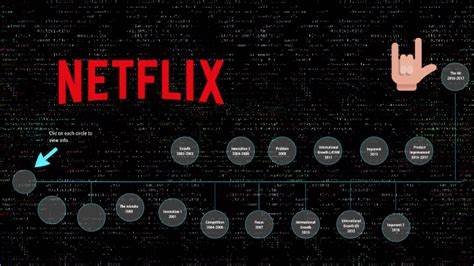Reward Systems: A New Frontier in Viewer Engagement
Entertainment platforms are always looking for ways to increase user retention, and gamification plays a big role in this. Loyalty programs, interactive quizzes, and digital bonuses have become common strategies across both movie platforms and online gaming. For instance, features like casino bonuses online offer users instant rewards that mimic the dopamine-driven feedback loops of binge-worthy TV content—bridging the gap between passive viewing and active engagement.
Netflix’s rise from a DVD rental service to a global streaming powerhouse is one of the most remarkable success stories in modern business. Its evolution has not only revolutionized the way we consume media but has also had a profound impact on the entertainment industry as a whole. Let’s take a closer look at how Netflix grew from humble beginnings to the entertainment titan it is today.
1. The Early Days: DVD Rental Service (1998 – 2007)
Netflix was founded in 1998 by Reed Hastings and Marc Randolph as a DVD rental-by-mail service. The concept was simple yet revolutionary: rather than visiting a video rental store, users could rent DVDs online and have them mailed directly to their homes. The service offered a significant advantage over traditional rental models by providing a larger selection of films without late fees, which were a common pain point at video rental chains like Blockbuster.
In 2000, Netflix introduced a subscription-based model, which allowed customers to rent DVDs with no due dates or late fees, a shift that helped build the company’s loyal customer base. By 2005, Netflix had already established itself as a significant player in the DVD rental market, boasting over 4.2 million subscribers.
2. The Shift to Streaming: A New Era (2007 – 2010)
In 2007, Netflix made a bold move by launching its streaming service, allowing subscribers to instantly watch movies and TV shows on their computers. This marked the beginning of Netflix’s transition from a DVD rental company to a streaming platform. The timing couldn’t have been better, as the internet speed and broadband infrastructure were improving, making streaming video more feasible for a large audience.
The early days of streaming were a bit slow, with a limited selection of content. However, Netflix quickly secured deals with major film studios and TV networks, significantly expanding its library. By 2010, Netflix had millions of streaming subscribers and was steadily growing its user base.
3. Expanding Global Reach (2010 – 2016)
As streaming became more popular, Netflix began to expand its services globally. In 2010, Netflix launched in Canada, its first international market, and by 2016, it had spread to more than 190 countries. This rapid expansion helped Netflix become a household name worldwide, giving the company a massive global audience.
During this time, Netflix focused heavily on refining its user experience and expanding its content library. By 2013, it had become clear that Netflix wasn’t just a platform for streaming third-party content—it was starting to produce its own original series, such as House of Cards and Orange is the New Black. This marked the beginning of Netflix’s transformation into a content creator, further differentiating it from other streaming platforms.
4. Original Content and the “Golden Age” of TV (2013 – 2020)
Netflix’s investment in original programming truly set it apart from its competitors. The release of House of Cards in 2013 was a game-changer for the streaming industry. It proved that Netflix could not only distribute content but also create award-winning, high-quality original programming. Other successful Netflix originals followed, including Stranger Things, The Crown, The Witcher, and Money Heist. These shows quickly garnered large, devoted fanbases and attracted critical acclaim, helping Netflix secure a dominant position in the entertainment landscape.
Netflix also expanded into movies, with high-profile films like Roma and The Irishman receiving Oscar nominations. By this time, Netflix was not just competing with cable networks and other streaming services—it was setting the standard for the entire industry, earning recognition for its innovation and original content.
5. The Streaming Wars and Competition (2020 – Present)
The emergence of new streaming services like Disney+, Amazon Prime Video, and HBO Max signaled the start of the so-called “streaming wars.” While Netflix remains the leader in global streaming, competition is fierce. These new entrants have added to the pressure on Netflix to continue producing compelling content and offering unique features.
Netflix has responded by increasing its investments in original content and diversifying its offerings, including expanding into reality TV, stand-up comedy specials, and documentaries. In addition, Netflix has worked on improving its streaming technology, offering features like offline viewing, 4K streaming, and personalized recommendations.
Despite the competition, Netflix continues to be the go-to platform for millions of viewers around the world. Its ability to adapt to new challenges and stay ahead of trends has kept it at the forefront of the streaming industry.

6. The Future of Netflix
As Netflix looks to the future, its strategy seems to be focused on continued growth through global expansion, innovation, and diversification. The company is focusing on expanding into more international markets, particularly in Asia and Europe. Additionally, Netflix is increasingly integrating interactive content (such as Bandersnatch), experimenting with gaming, and even venturing into live-streamed events.
While the competition in the streaming space continues to grow, Netflix’s ability to evolve and embrace new technologies and storytelling formats will likely keep it as a dominant force in the entertainment industry for years to come.
Conclusion
Netflix’s transformation from a DVD rental service to a global streaming giant has redefined the entertainment industry. The company’s ability to adapt to technological changes, embrace new content formats, and invest in original programming has allowed it to remain at the top of the streaming world. As Netflix continues to evolve, it will be exciting to see how the platform shapes the future of media consumption and content creation.

